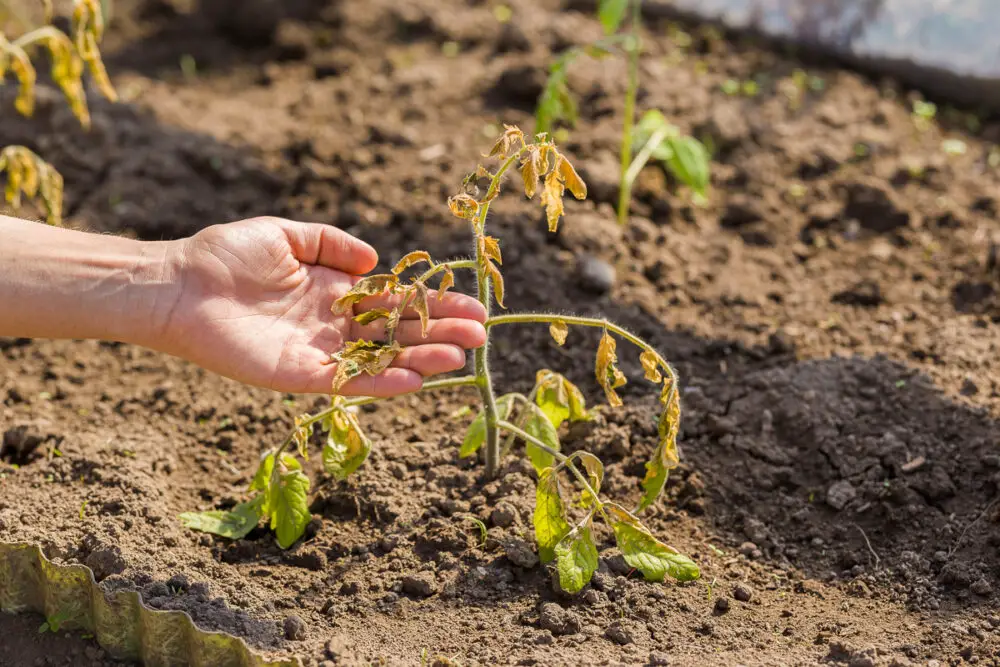Tomatoes are a garden favorite, but there’s nothing worse than watching your vibrant green tomato plants are turning brown. When your tomato plants exhibit this troubling discoloration, it’s a sign that something is amiss in your garden. A strong tomato crop is possible with a little understanding and mindful care.
While tomatoes are generally quite low-maintenance, they do have their fair share of challenges. Whether you’re a beginner or a seasoned tomato grower, you might encounter a few problems along the way, such as the issue of tomato plants turning brown.
Several factors can cause your tomato fruits, leaves, or stems to lose their vibrant colors and appear rather unhealthy with a brownish hue. However, the good news is that most of these issues are simple to address and can be prevented with ease.
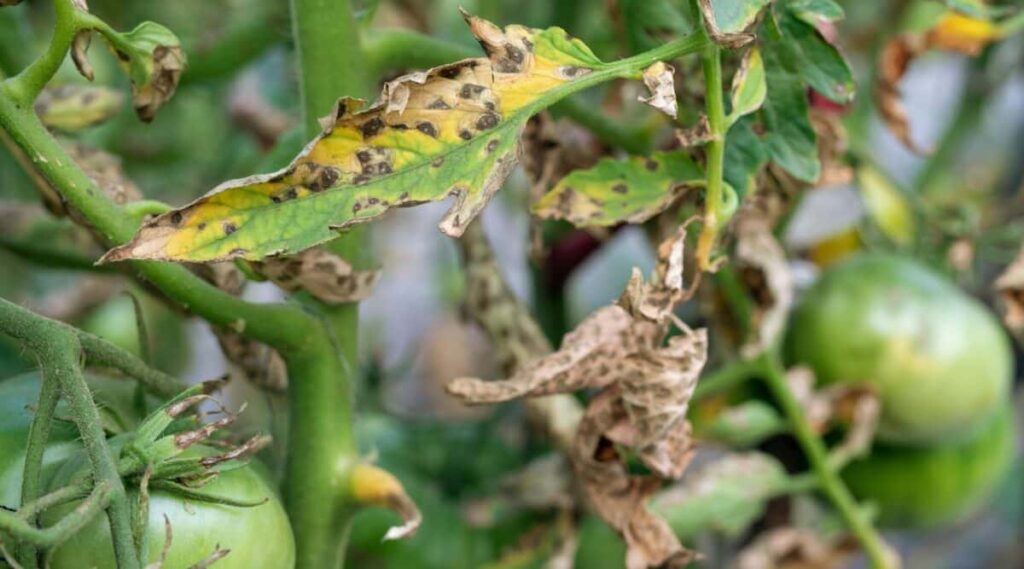
Fungal Diseases Causes Tomato Plants Turning Brown
Fungal diseases are most of the maximum conventional causes of brown spots and discoloration on tomato plants. Diseases like early blight, late blight, and septoria leaf spot are notorious culprits. Early blight typically appears as concentric rings with dark centers, while late blight shows up as irregular brown patches. Septoria leaf spot manifests as small, circular brown spots with dark borders.
- How to Fix It
To combat fungal diseases, adopt a few essential practices. Ensure good air circulation by spacing your tomato plants adequately. Water your plants at the base to keep the foliage dry, and use fungicides as a preventive measure or in the early stages of infection.
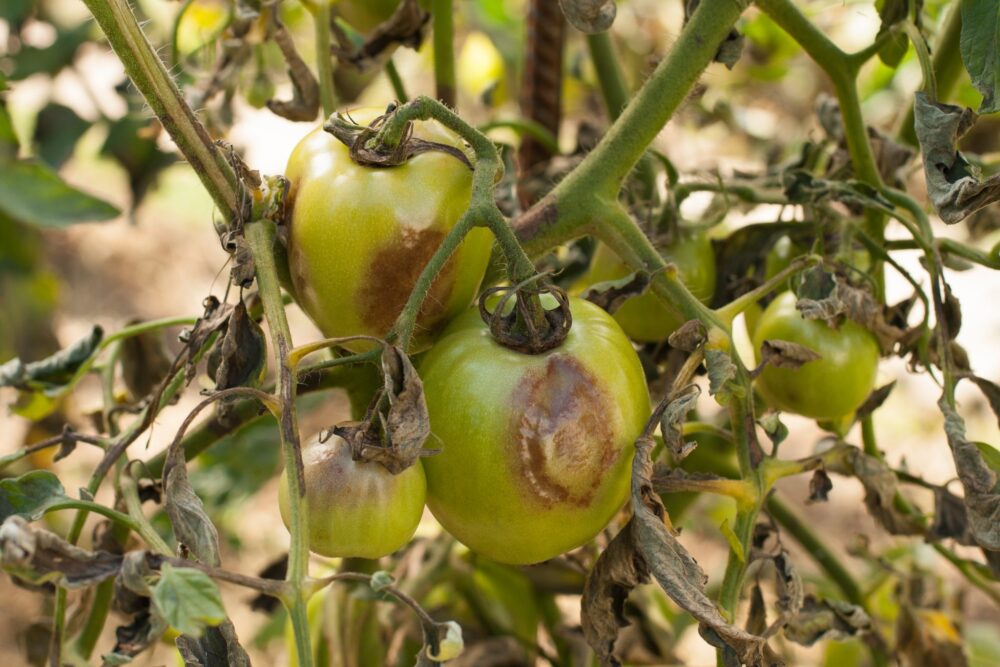
Bacterial Infections
Bacterial infections can also cause browning in tomato plants. Common bacterial culprits include bacterial canker and bacterial speck. Bacterial canker causes dark, elongated lesions on stems, while bacterial speck results in small, raised spots on leaves.
- How to Fix It
To address bacterial infections, practice proper hygiene by promptly removing and disposing of infected plant parts. Consider using copper-based sprays or antibiotics in severe cases imposing crop rotation can also help save you the recurrence of bacterial sicknesses.
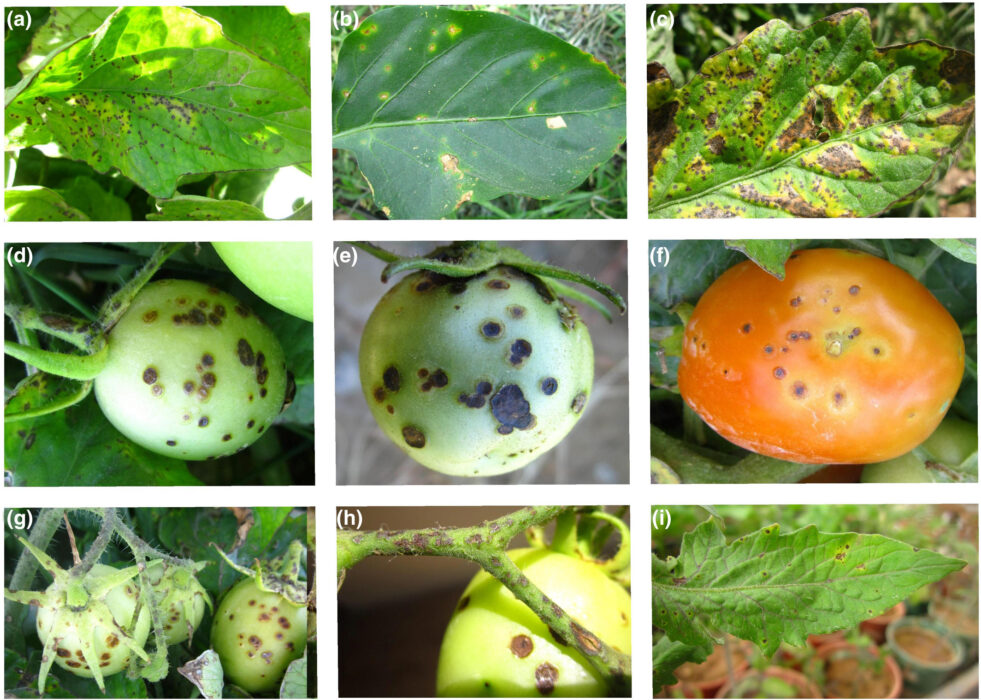
Environmental Stress
Tomato plants are sensitive to their environment, and stress caused by extreme conditions can result in browning.
- How to Fix It
Shield your plants from extreme weather conditions with shade cloths or row covers. Adequate watering and well-draining soil can mitigate stress caused by drought and excessive rainfall.
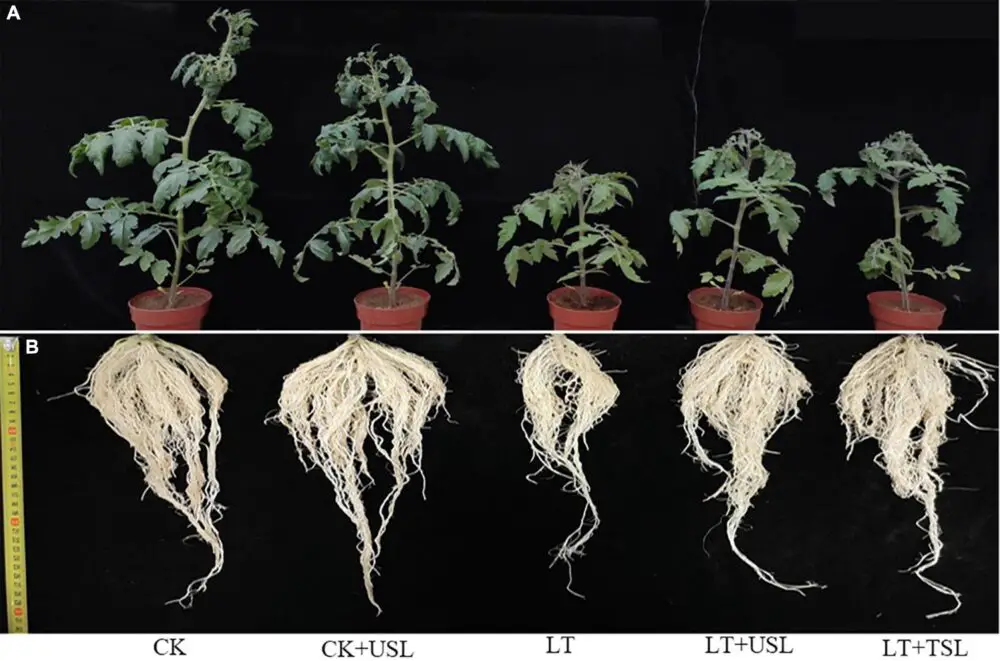
Nutrient Deficiencies
Tomatoes require specific nutrients to thrive, and deficiencies in essential elements like nitrogen, magnesium, or calcium can manifest as brown leaves or fruit.
- How to Fix It
Regularly fertilize your plants with a balanced, slow-release fertilizer. Conduct tests on the soil to detect particular deficiencies and supplement correctly. Epsom salt is helpful with magnesium shortages, whereas lime can help with deficiencies in calcium.
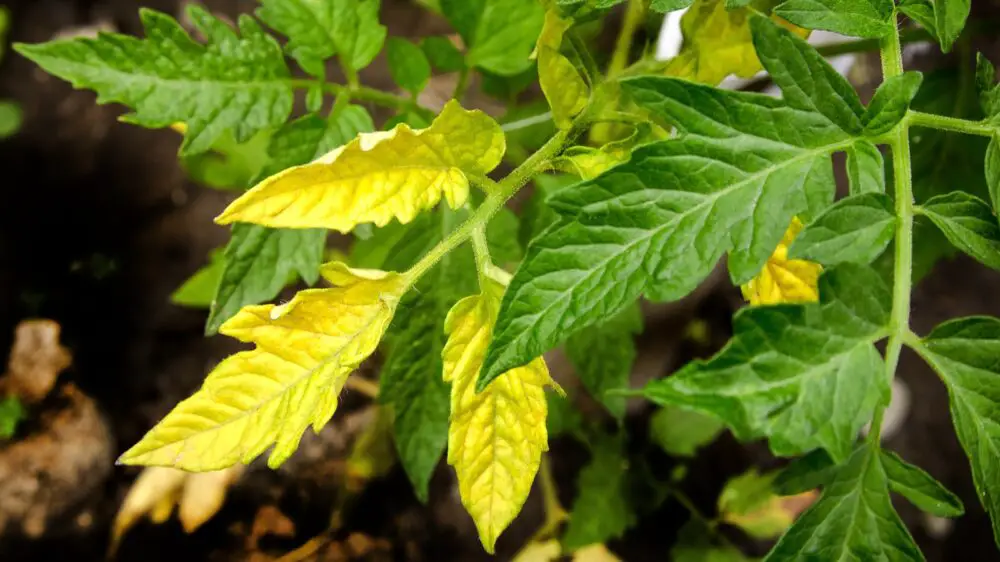
Overwatering and Poor Drainage
Overwatering and insufficient drainage are common problems which can cause leave wilt, compromising the overall health of your tomato plants.
- How to Fix It
Adjust your watering schedule to allow the soil to dry slightly between waterings. Ensure proper drainage by amending heavy soils with organic matter or opting for well-draining containers.
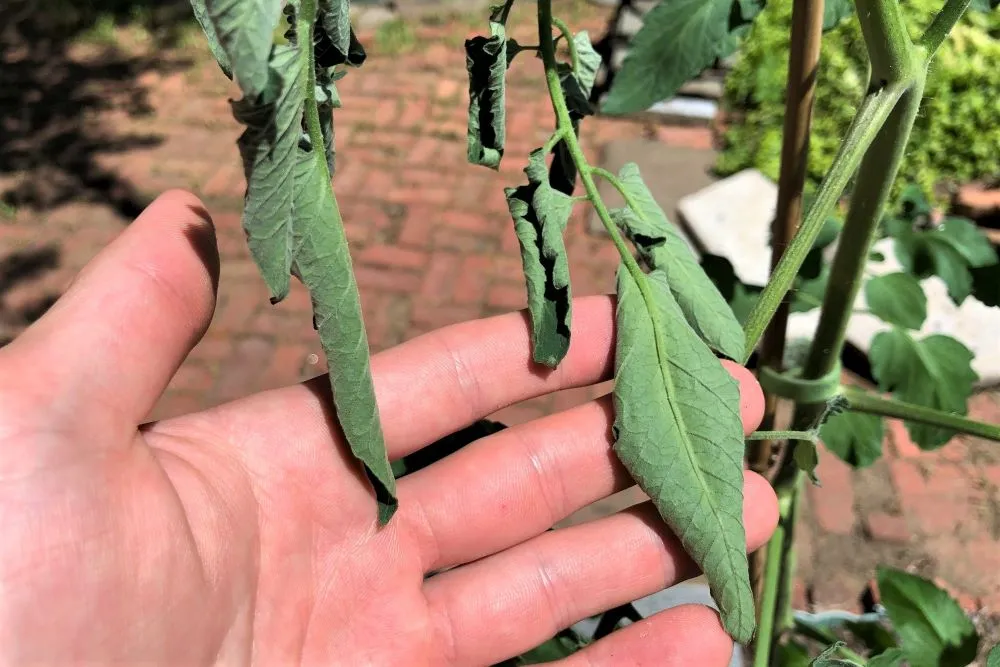
Pruning and Maintenance
Poor pruning and care procedures can stress tomato plant life and cause browning. While pruning is beneficial, excessive or incorrect pruning can harm your plants.
- How to Fix It
Prune selectively, removing only diseased or crowded branches. Provide sturdy support to prevent branches from breaking under the weight of fruit. Properly prune suckers to encourage healthy growth and adequate air circulation.
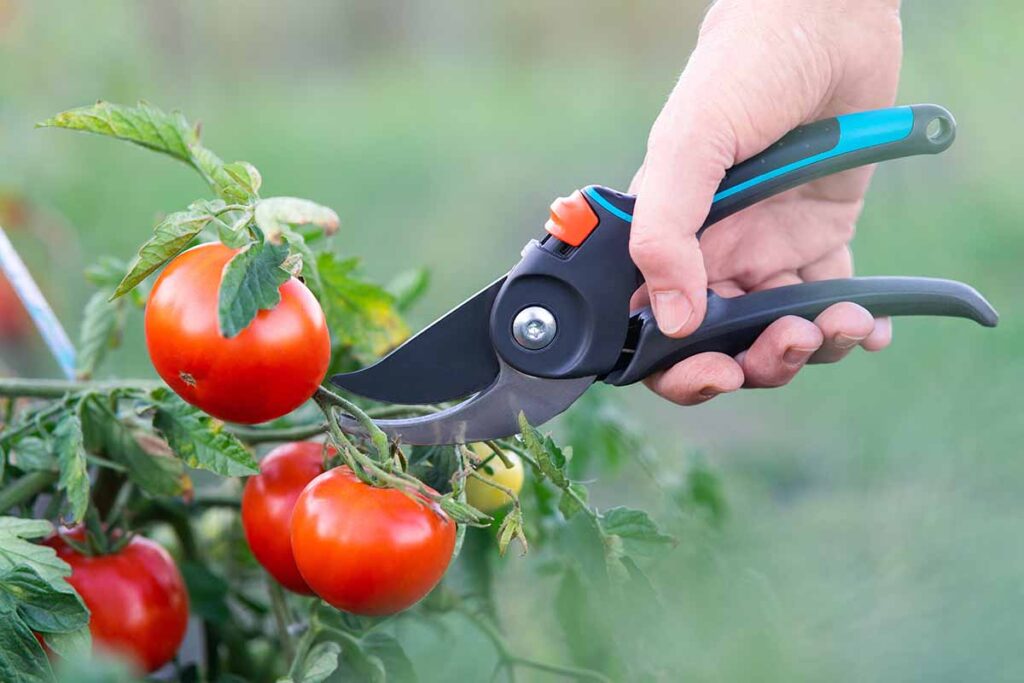
Disease-Resistant Varieties and Preventative Measures
Prevention is often the best cure. Planting disease-resistant tomato varieties can lower the risk of browning and other diseases significantly.
- How to Fix It
Research and choose tomato varieties with resistance to common fungal and bacterial diseases. Remove waste and dispose of infected plant material to maintain proper plant hygiene. Implement crop rotation to reduce the buildup of pathogens in the soil.
Blossom End Rot
On tomato fruits, unusually dark coloring can occur. Blossom End Rot can be identified by brown, sticky areas on the bottom of your tomatoes. The rot usually starts at the blossom end of the tomato fruits, looking like a water-soaked, pale brown spot. As it develops, the blossom end becomes dark brown and leathery, and eventually black. The rotted end also flattens out as it spreads.
- How to Fix It
There are many causes for blossom end rot, such as overwatering or inconsistently watering your tomato plants or a calcium deficiency. If you’re watering your tomato plants correctly and following the tips above, you might be facing soil issues.
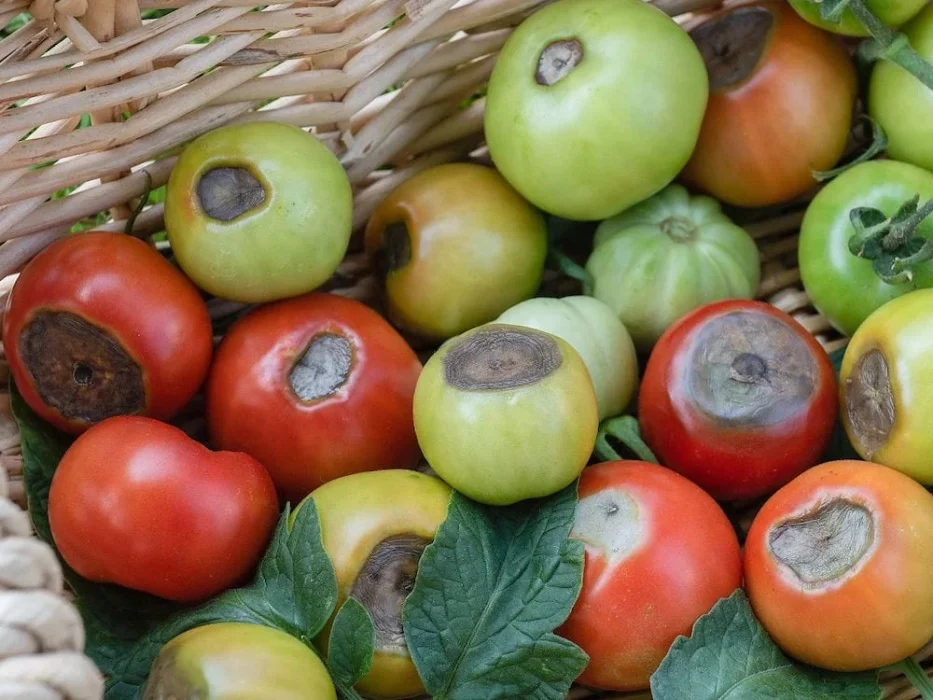
Why are the leaves on my tomato plants turning brown?
Early in the season, you may see brown or black spots on your tomato plant’s leaves. This is followed by dropped leaves and/or sunburned fruit.
To avoid early blight, it’s important to clean up old tomato plants at the end of the season. Pull up the spent plants and get all of the dead leaves, roots, and vines out of your garden before winter begins. Don’t compost dead tomato plants
In addition to removing decaying tomato plants from your garden at the end of the season, you should also practice crop rotation. Don’t plant your tomatoes in the same place year after year. This is an open invitation to the fungus that causes early blight
Why are my Tomato Plants Discolored and Stunted?
If pest worms infect the soil around your plant, they will eat on the roots and cause them to enlarge. Plants grow short as a result, and the leaves become discolored.
Tomato plants affected by bad nematodes will still produce tomatoes. Just continue to care for them as you normally would. Planting marigolds around the affected plants may help drive the nematodes away. Remember to plant marigolds in your tomato patch right from the start for years to come.
Why do the leaves on my Tomato Plant appear Soggy, Papery and Brown?
Another type of fungus causes a different type of blight in tomatoes. Late blight is active toward the end of the growing season, when the plants may be larger and more crowded in your tomato patch.
Warm, wet weather encourages the development of late blight. Lack of good air circulation caused by overcrowding facilitates its growth. Late blight has a lack of relief. If your plants are struck with it, you must simply pull them up and dispose of them in the trash or burn them.
Conclusion
In short, the browning of tomato plants is a common issue for gardeners. It is one that can be solved with learning and attentive care. You can nurse your tomato plants back to health and enjoy an abundant crop by recognizing the eight main causes of browning and following the specific treatments provided in this article.
Remember that early detection, proper maintenance, and a little extra care during adverse conditions are essential for maintaining thriving tomato plants. You can make sure that your tomato plants remain lush and fruitful throughout the growing season with love and a little common sense.
FAQs about Tomato Plants Turning Brown
What causes tomato leaves to turn brown?
Tomato leaves can become brown for a variety of causes, and the exact cause varies depending on the circumstances. Here are some of the most common causes of brown tomato leaves:
Watering Issues, Fungal Diseases, Bacterial Diseases, Viral Diseases, Environmental Stress, Nutritional Deficiencies, Chemical Stress, Insect Damage, and Physiological Disorders are some of the issues that can arise.
How do you stop tomatoes going brown?
Tomatoes can flip brown due a selection of reasons, inclusive of oxidation and enzymatic techniques. To keep tomatoes from turning brown use the following methods:
Tomatoes should be stored well, and acidic ingredients should be used. Cut and serve fresh, use a sharp knife, blanch or steam Store with Olive Oil. Use fresh tomatoes and think about ascorbic acid (Vitamin C).
How do I add potassium to my tomato plants?
It’s vital to provide potassium to your tomato vegetation in order for them to grow properly and broaden fruit. Potassium (k), along with nitrogen (N) and phosphorus (P), is one of the three main vitamins required by using flowers. It is essential for the growth of plant activities, together with photosynthesis, water uptake, and disease resistance.
What is the best way to add calcium to tomato plants?
Including calcium to tomato plants is crucial for preventing common issues like blossom end rot. here are a few powerful ways to add calcium on your tomato flowers:
Crushed Eggshells, Calcium-wealthy Fertilizers, Gypsum, Limestone, Calcium-Infused Water, Compost, Mulching, and Epsom Salt.
What do overwatered tomato leaves look like?
Over-watered tomato flowers can exhibit numerous symptoms of strain, and the appearance in their leaves can be an excellent indicator of this issue. As like Yellowing leaves, leaves drop and decrease fruit manufacturing

